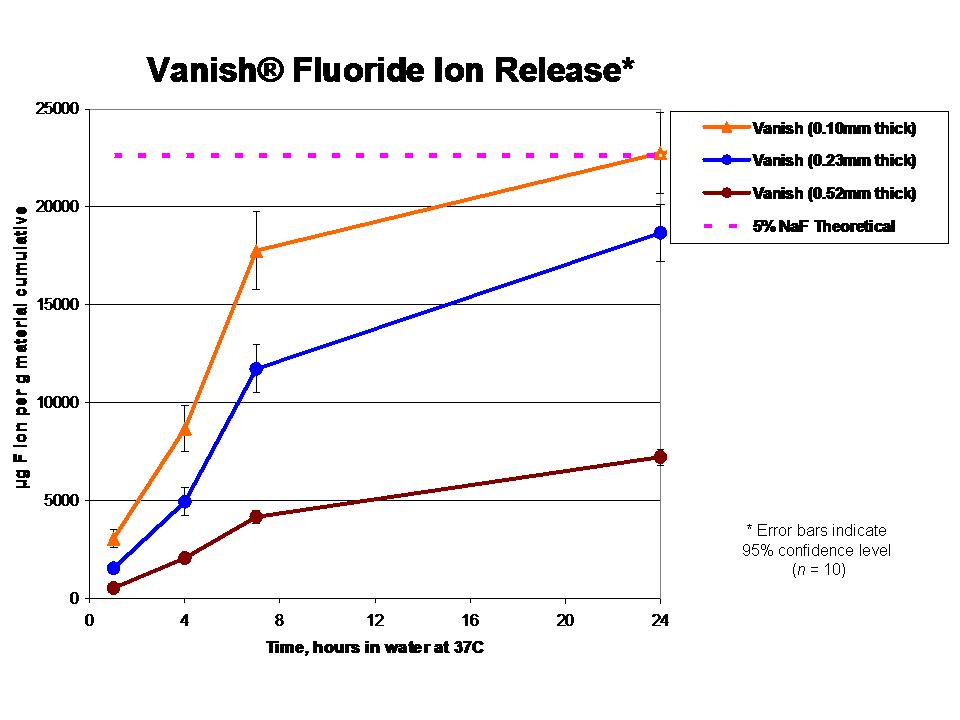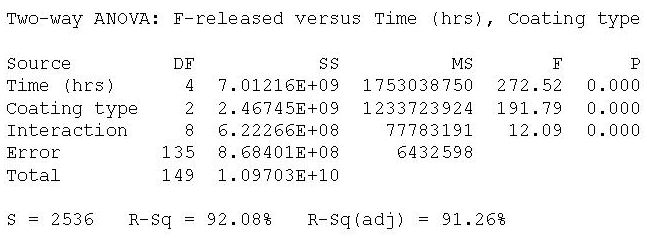ABSTRACT: 2554
Coating Thickness Influences Fluoride Release from White Fluoride Varnish
| P.-J. FLANIGAN, M. ENSLIN, and P.M. SEILER, 3M Company, St.Paul, MN, USA | |
Click on images to view full size. Objective: Determine whether the coating thickness of OMNI's Vanish® Varnish 5% Sodium Fluoride White Varnish (Vanish) influences the amount of fluoride released in water over 24 hours. Method: A thin (0.10mm), medium (0.23mm), and thick (0.52mm) coating of Vanish was coated onto resin-coated glass slides (n=10) in an area of 25 mm by 32 mm. Each sample was immediately weighed and placed in 25mL DI water at 37◦C. After 1 hour, the water was collected and replaced with fresh DI water. A 10mL aliquot of collected water was diluted 1:1 with TISAB II prior to fluoride analysis. Buffered samples were evaluated using a calibrated fluoride ion selective electrode. This procedure was repeated at 4, 7, and 24 hours. Fluoride concentrations observed were converted to micrograms of fluoride and normalized to micro-grams of fluoride released vs. the coating weight for each slide. Cumulative mean micrograms of fluoride released per gram of Vanish applied at each time-point were analyzed using two-way ANOVA at each collection time. (T-test, p<0.05). Results: The cumulative fluoride released per gram of sample in water at 37◦C over time is shown below. Thin coatings of Vanish release a greater percentage of total fluoride than thicker coatings. The thinnest coating (0.10mm) slowly releases 100% of the total theoretical fluoride amount within 24 hours.
| |
| Seq #233 - Whitening/Stain/Bleaching/Dentifrices 3:30 PM-4:45 PM, Friday, July 4, 2008 Metro Toronto Convention Centre Exhibit Hall D-E | |
©Copyright 2008 American Association for Dental Research. All Rights Reserved.

